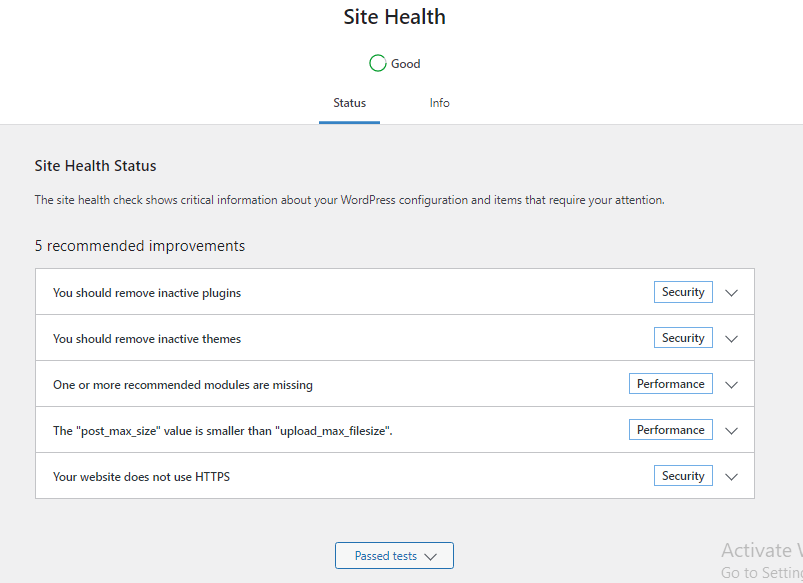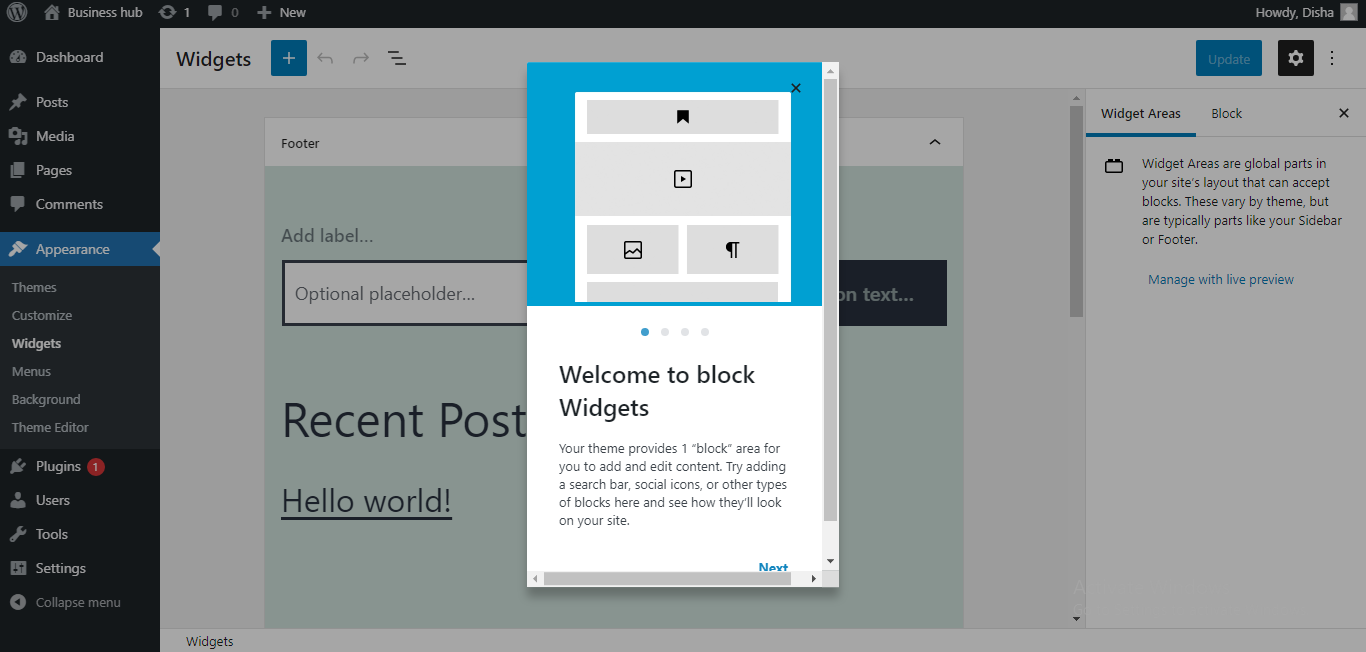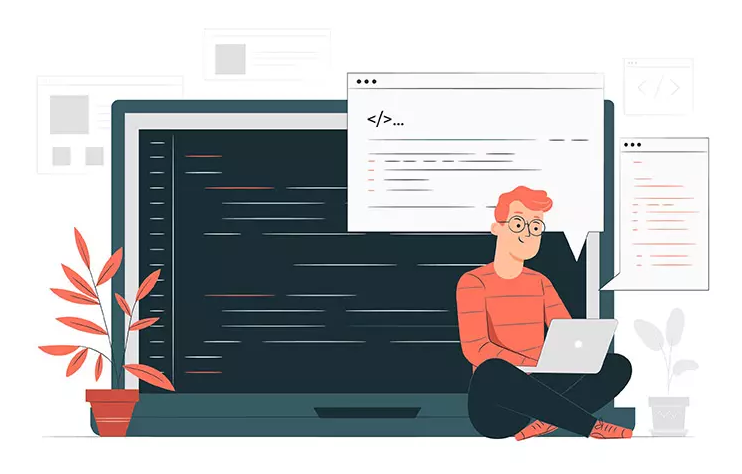WordPress 5.8, released on 20th July, is called “Tatum”. It is named after Art Tatum, a Jazz pianist. brings a whole new range of features along with the introduction of some initial features for the Full Site Editing project.
The WordPress 5.8 update introduces some very useful features, some new blocks for the Gutenberg editor, support for WebP images, blocks as widgets, template editor, and so on.
Some of the most important features and updates are:
- Full Site Editing in WordPress 5.8
- WebP images support
- Edit Post Templates
- Block Editing for Widgets as well as Customizer
- Block patterns and pattern Directory
- Dropping support for IE11
- Custom tabs for Site Health interface
- Theme.json: Global styles and Global settings
- Other Changes
Full Site Editing in WordPress 5.8
As the name suggests, full site editing is an attempt to provide the flexibility and tools/features to build an entire website using blocks. It is a broader project, and WordPress 5.8 just brings the first features falling under it.
This new update will not yet significantly change how we build and manage websites with WordPress, but it is just the beginning of the change since it introduces some new blocks and features that will be the instrument for Full Site Editing.
WordPress 5.8 doesn’t actually bring on the Full Site Editing but introduces some of the features that can contribute to it. So it just brings about some new blocks and features that will aid the future of WordPress with full site editing capabilities. The template editing feature, which we will discuss later in this post, and global settings, and styles options.
This version is just the beginning of or the tip of the iceberg called the FSE experience. New and more features to provide a complete and flawless building experience within WordPress will be introduced over time, with newer versions.
The new site health Interface

The feature at Tools > Site health option, which will give you an insight into the health of your site, is also updated.
The tool helps you detect common WordPress configuration errors and other issues on your site that may impact its performance. With WordPress 5.8, developers are now allowed to add more to the Site health interface. The site health header can either include tab navigation or extend another interface.
WebP image support
WebP, an image format developed by Google, intends to change the quality of web experience with redefined image quality at smaller sizes.
WebP images will now be supported by WordPress. The format is specially developed to make the internet users’ experience faster and better. They are now supported by mostly all the major browsers. It is great news for everyone, all the bloggers or business website owners that use WordPress.
WebP images can be compressed losslessly and give the best output compared to other image formats, and now you can use them in your WordPress-based websites.
WebP images are a way you can easily use better quality images on your website, without having them occupy large memory space. Now, WordPress will allow you to upload the WebP images easily to the media gallery, just like any other image.
Block Patterns & Directory

In order to maintain the consistency of the layout across your website, you can now use the block patterns. New in WordPress 5.8 will be the block pattern library, called pattern Directory.
It will be a repository for WordPress patterns. Any WP.org user can create and share Block Patterns. They can submit their patterns after going through some basic validations. They can even view and manage their submitted patterns.
So WordPress users can browse through patterns based on their categories or use the search mechanism to find patterns. They can have a live preview of the patterns and use them for their projects.
Edit Post Templates
You can now create, edit, save and reuse templates, to manage the layouts on your WordPress website. Find the template editor in the post editor, and use it to design a structure using the blocks you need and save it.
Later, you can easily assign these templates to specific posts or pages. This feature will be opt-in for classic themes and opt-out for themes with theme.json and Block-Based Themes.
Dropping support for IE11
With Microsoft 365 dropping support for the Internet Explorer browser, it is clear that most internet users are not using it.
WordPress 5.8 and versions after that, will discontinue support for Internet Explorer. This means that this version and newer ones after it, will not be tested for the browser, or will have code compatibility required for IE support.
Blocks as widgets

The block-based widget editor is a major addition to the new version of WordPress. It brings the block-based editing interface to the widgets in WordPress.
Even if you still use the classic WordPress themes, the new widget editor will have many advantages. You will be able to create layouts using columns, separators, spacers, and other design blocks. They will also allow rich text editing by default.
This feature comes with backward compatibility, so you don’t have to worry about your existing widgets or the theme widgets.
The block widgets will also be available with the customizer making things more flexible.
Theme.json: Global styles and Global settings
You can control the access allowed to your clients in terms of how much they can control the site. For instance, you want to allow some simpler changes like define the color palette, or font color and styles, but you want to restrict some of the advanced customizations.
You can do so by creating a theme.json file and enable or disable features. Manage the settings for the block editor or a single block. You can even set how the styles are managed and control the Custom CSS properties too.
Other changes
Besides the major features, there are several minor added features to improve the web development experience with WordPress. Some of them are:
- Decimals will be allowed while managing the spacing
- More Gutenberg blocks to enhance the block editing features
- You can now embed pdf files with the File block just like you upload any other file
Wrapping up
WordPress has been the favorite of web users for a long time now, and it powers over 41% of the internet. With every new version of WordPress, the experience tends to get better. And eventually, we can look forward to Full site editing in the future, where designing websites will be easier and more fun.

